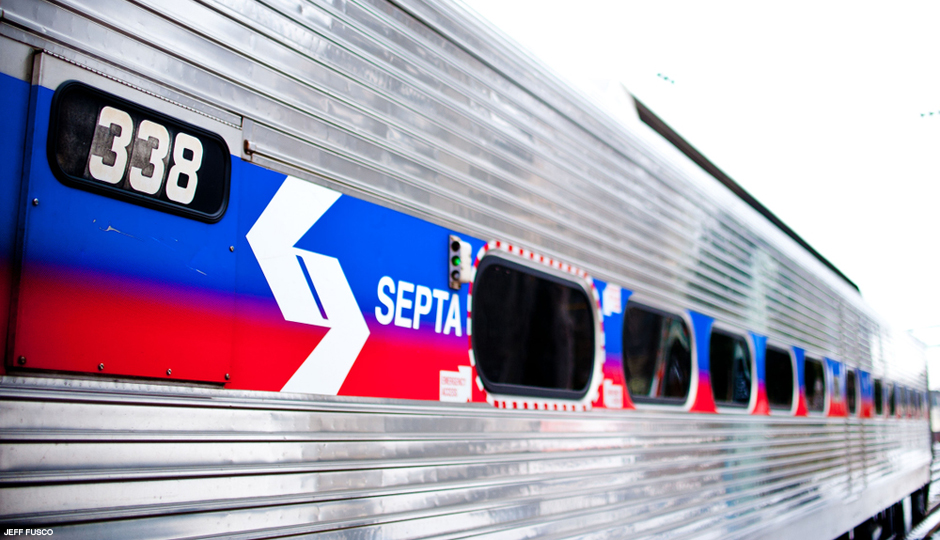Funding Secured, SEPTA Plans to Rebuild City Hall Station; Part of a Long List of Improvements

In the long, hard slog to secure stable funding for transportation statewide, SEPTA stressed that without it, its system would die a slow, painful death.
So, having now been through that near-death experience, SEPTA’s five-year capital budget proposal wisely avoids talk of new routes or extensions, save for one that was already in the pipeline when the funding crisis hit. Instead, at public open houses Feb. 26, SEPTA presented a five-year capital program that addresses each of the items that would have caused that slow death.
The five-year plan has hundreds of moving parts, but they can be lumped into a few broad categories:
- Replace deteriorated infrastructure — tracks, bridges, power supply.
- Replace aging vehicles and add capacity to handle surging Regional Rail ridership.
- Improve the passenger experience by fixing and upgrading stations.
- Improve the quality of information riders receive.
Chief financial officer Rich Burnfield told attendees at an open house at SEPTA headquarters that the total undertaking would be a huge one. Through both direct funding and leveraged funds, the agency will spend $1.8-2 billion over the next five to six years on capital improvement projects, doubling the agency’s existing capital budget by fiscal 2018. As that current capital budget supports 24,000 jobs, the new capital plan represents quite a stimulus — another 24,000 jobs, based on standard economic forecasting assumptions.
Burnfield explained that SEPTA had a dress rehearsal for this program with its experience with the federal stimulus package in 2009. “We got $191 million from the stimulus, which funded 26 projects initially plus another six one year later.” SEPTA’s quick deployment of federal stimulus funds serves as the model for its current plan of attack on a state-of-good-repair backlog that totals $5 billion, he added.
(That performance no doubt contributed to the American Public Transportation Association naming SEPTA the Best Large Transit System for 2012, an award that still has some SEPTA critics scratching their heads.)
On the infrastructure front, the first priority will be rebuilding two viaducts on the Media-Elwyn Regional Rail line that are on the verge of catastrophic failure and rebuilding critical substations on the former Reading side of the Regional Rail system, in particular a substation at Jenkintown and the main Reading-side power station at Wayne Junction. Putting in new electrical equipment at Wayne Junction is critical, a SEPTA official explained, because it represents “a single point of failure” on the Regional Rail network — if it goes, so does all Regional Rail service east of the Commuter Tunnel.
The first priority for vehicles is overhauling the locomotives that provide peak-hour capacity and buying additional locomotives and cars to add more peak-hour seats. “What we really need is ‘peak of the peak’ capacity,” said assistant general manager for operations Ron Hopkins.
To do this, the agency is considering purchasing bi-level commuter rail coaches similar to those Hyundai Rotem built for the Massachusetts Bay Transportation Authority at its South Philly plant. “We have very limited slots [to run trains] during rush hour and limited storage space,” Hopkins said. “The best way to go was up.” SEPTA will need to make sure the cars can fit into the tunnels leading into Suburban Station before committing to an order of double-deckers, but if everything checks out, Regional Rail riders can expect to see the new equipment on super-express runs during peak hours. “They may be so attractive, we could run another trip” on each line they work, Hopkins said.
One of the biggest priorities on the passenger-facilities side is City Hall Station on the Broad Street Line. “This should be a showcase for SEPTA, but with the condition of the station now, it’s not a showcase we can be proud of,” said Burnfield. Rebuilding it, however, will take longer than other station projects will because of an engineering blunder committed when the station shell was excavated in 1915 — namely, it was placed directly beneath City Hall and must support the weight of the building. Other facilities projects that will likely be completed sooner include accessibility at Margaret-Orthodox station, new Regional Rail stations at Exton and Levittown, and rehabilitation of the West Terminal at 69th Street Transportation Center.
As to why SEPTA is focusing exclusively on repair with its capital program, Hopkins put it this way: “You don’t want to build an annex to your house while your chimney is crumbling and your roof is leaking water.” The one exception to this no-service-expansion policy is the already approved extension of the Media-Elwyn line to Wawa, for which preliminary work had already begun when SEPTA slashed its capital budget to hold service harmless after the state’s previous transportation funding scheme collapsed in the mid-2000s.
The additional capital funding begins with $55 million for the remainder of the current fiscal year, then rises to $345 million in the coming fiscal year and continues to climb incrementally afterwards.
SEPTA will release a draft capital budget at the end of March, and the SEPTA board of directors is slated to hold hearings on the budget in April. If you missed the public open houses but want to weigh in on SEPTA’s proposed capital spending plan, you can see the open house presentation and find out how to submit comments by mail or email via the open house invitation.
Follow @MarketStEl on Twitter.


